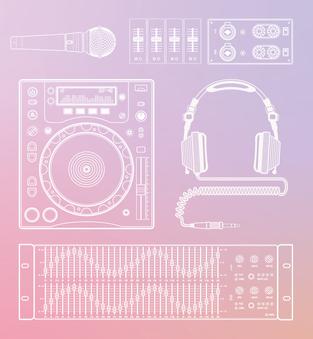Make some noise for sound design
4/23/2024
When you go to the movie theater to see the latest Batman film every six months, they typically show an ad for concessions before the trailers.
Ice clunks into a glass. Coke starts to pour over it, fizzy and loud. A little droplet of condensation trickles down the side of the cup. As this experience is happening, it starts firing your neurons on your behalf, telling you, “You need this now.” But it’s not the composition, the pacing, the music, or the visuals of those tiny bubbles that makes your mouth feel parched.
The thing that gets its hooks into you is the crispy, nuanced layers of sound.
What you’re hearing is there on purpose. It has been so carefully crafted that when you hear the glugging of the liquid and the fizz of the bubbles, you’re brought back to every time you had a Coke, and how great it was. You recall the anticipation as you poured it into your own glass. You feel the bubbles hitting your tongue on that first sip. In that moment, you can almost taste it, because the sound is visceral. If you remove the sound, it’s not the same. It’s somehow… flat.
When you think about a video or film, sound design probably isn’t the first thing you think about. There’s the subject matter, the composition, the pacing, the color, the lighting, even the music. And all of those things matter so much.
But sound…
Sound has a way of sticking in your brain. Of evoking sense memory. Of making a space seem big or small. It can tell you about the weather, the season, what time of day it is, or what kind of shoes a person is wearing.
As a higher ed institution, you need curious students to see what your campus looks like — to be able to imagine themselves in the experience of being there. But experiencing your school can also mean what it sounds like.
What is it like to walk across campus in the autumn, newly fallen leaves crackling underfoot? What does it sound like from the stands at a big game? How does the surface of the running track crunch when it’s stepped on? Does dry ice in the lab make a noise? What are the outside sounds of spring at graduation?
Whether you’re making a feature film or a six-second ad, the entire point of video as a medium is to get you to feel something when you watch it. Sound is incredibly good at evoking an emotion, and embedding it in the viewer’s memory.
Let families hear sounds that remind them of a time when they were here — or somewhere like it.
What does your campus tour generally look like? Think about the main areas that you choose to feature, and if you’re choosing those spots for your video, find ways to sneak sound in that will blend with what they’re looking at. Until Smell-O-Vision™ is a household staple, we only have their eyes and their ears to work with.
Be as intentional with sound as you are with shots and locations.
Just as the visual scene on set is generally planned out ahead of time and staged in a way to make it look its best for the camera, not as it appears in real life, you can do the same for your sound. You’d be surprised how some of the sounds you’re hearing in video are actually created. A good number of them weren’t there on the day of filming, they were added later. That crunching leaf might be a Walmart bag. Footfalls on snow might be a sack of cornstarch. The way you associate visuals with sounds here can create something big, bold, subtle, or crispy. Think about what your audience should be thinking and feeling in this moment, and double down on it with your sound.
Check out this video from WIRED about how sounds for movies get made:
Tap into students’ imaginations by creating new sense memories of the place as they watch and listen.
When you’re planning your shot list, be cognizant of how each scene will play emotionally, and what elements of each scene can be used to hit your viewer in the heart. Whether that’s amping them up, or getting them to fight back tears while watching your ad in public (“I’m not going to cry again in this Arby’s”), choose things that complement what’s happening. If your music is largely percussive, sound effects that hit like a drum will work better than something subtle. Conversely, if you have a more somber score, and there’s not a lot of action in the scene, sounds that are subtler can add intrigue and hold the viewer’s attention. Use sound design to evoke an emotional reaction that will make your school unforgettable.
Because here’s the thing: If you don’t? You might be ignoring one of the most powerful tools a filmmaker has to connect with a person.





